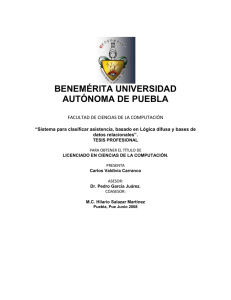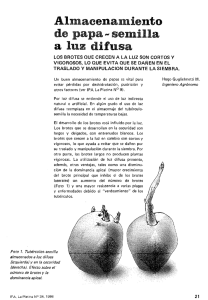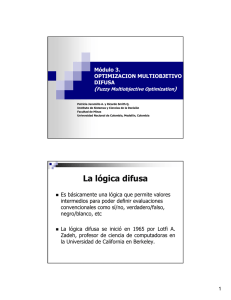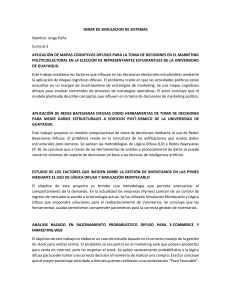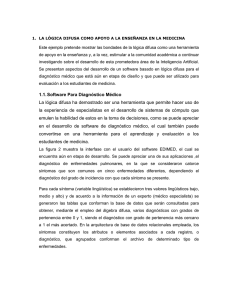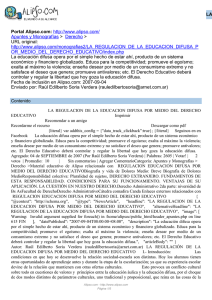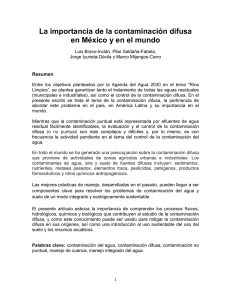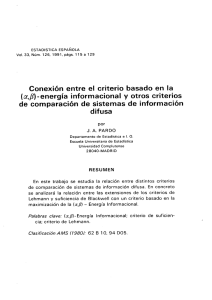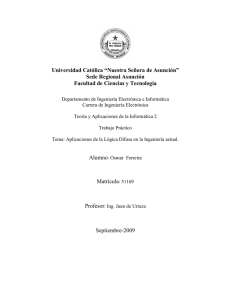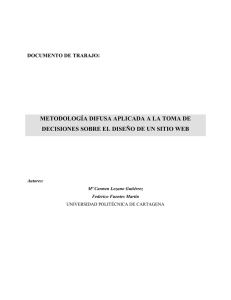Programación lineal difusa
Anuncio
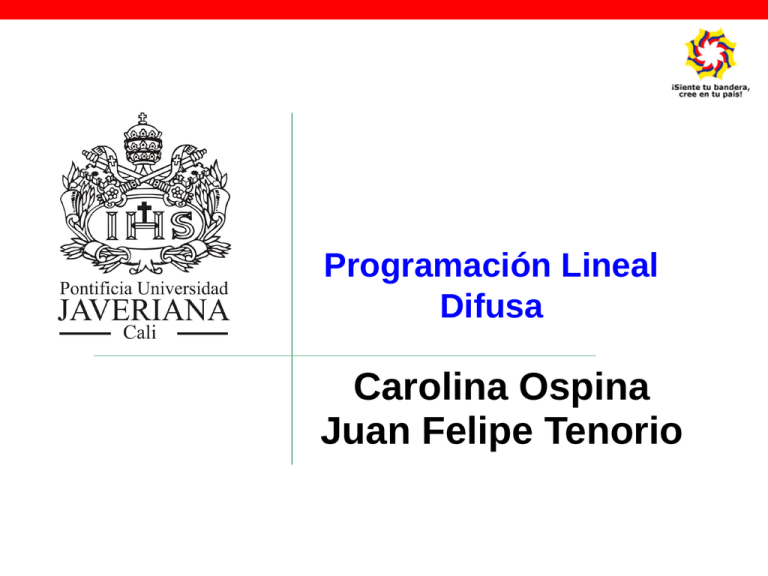
Programación Lineal Difusa Carolina Ospina Juan Felipe Tenorio PROGRAMACIÓN LINEAL DIFUSA Caso General n C X max j j 1 i n s .t j 1 X j A X ij 0 j j i Bi n m PROGRAMACIÓN LINEAL DIFUSA Primer Caso Aquí la variable difusa es B i Bi se define de la siguiente manera n max c x j j 1 i n s .t j 1 x j a x ij 0 j j B i m Bi n i 1 Cuando x bi bi pi x Cuando b i x pi 0 Cuando b i p i x b i p i PROGRAMACIÓN LINEAL DIFUSA Primer Caso • Se busca z l siendo esta la resolución del sistema con el bi mas pequeño. • Se busca z up siendo este la resolución del sistema con el bi mas grande (bi+pi). PROGRAMACIÓN LINEAL DIFUSA Primer Caso Ahora el problema se convierte en el siguiente de problema de optimación clásico max s .t z up n pi z l cx z a ij x j b i p i i N m i 1 , x j 0 l j Nn PROGRAMACIÓN LINEAL DIFUSA EJEMPLO Una compañía elabora dos productos. El producto p1 y el producto p2 tienen una utilidad por unidad de $0.40 y $ 0.30 respectivamente. Cada unidad de p1 requiere el doble de tiempo de elaboración que el producto p2. El total de tiempo de elaboración es al menos de 500 horas/día, y puede ser extendida a 600 horas/día, si se trabaja horas extras. Se dispone de materia prima suficiente para 400 unidades de ambos productos/día, pero en base a experiencias previas esta materia prima puede ser extendida a 500 unidades/día. Encontrar el modelo PL que nos maximice la utilidad. PROGRAMACIÓN LINEAL DIFUSA Segundo Caso Se puede reescribir entonces: n max c x j j 1 i max n s .t j 1 x j n A x ij 0 j j B i i n Donde A y B son difusas, con A=<s,l,r> y B=<t,u,v> m c x j j 1 n s .t j 1 x j i s , l , r x t , u , v ij 0 j ij ij n j i i i i m PROGRAMACIÓN LINEAL DIFUSA Segundo Caso Se tiene que: A B si , s1 s 2 , s1 l1 s 2 l 2 , s1 r1 s 2 r2 . Además : s1 , l1 , r1 s 2 , l 2 , r2 s1 s 2 , l1 l 2 , r1 r2 s1 , l1 , r1 x s1 x , l1 x , r1 x PROGRAMACIÓN LINEAL DIFUSA Segundo Caso El problema se puede reescribir entonces así: n max c x j j 1 i n s x s .t j 1 ij s ij s ij j x j 0 j i l x r x n j 1 t n j 1 ij ij n j j t i t i u i v i PROGRAMACIÓN LINEAL DIFUSA EJEMPLO Considere en siguiente problema de Programación Lineal difuso max z 5 x1 4 x 2 s .t 4 , 2 ,1 x1 5 , 3 ,1 x 2 24 , 5 ,8 4 ,1, 2 x1 1, 0 . 5 ,1 x 2 x1 x 2 0 12 , 6 , 3 PROGRAMACIÓN LINEAL DIFUSA Conclusiones • Los problemas de programación lineal difusa se ajustan más a la realidad, dado a su cualidad de modelar cambios (rangos) en sus variables. • El método difuso del caso 2 posee restricciones más fuertes que las del caso 1.
